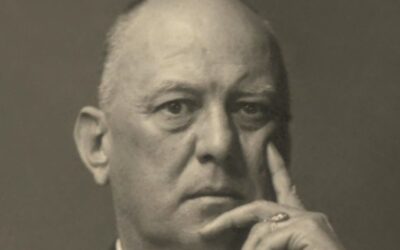- The Humdrum Day That Ignited a Movement: An Introduction to Rosa Parks
- A Life Forged in Segregation: The Early Years of Rosa Parks
- The NAACP and a History of Activism
- The Enduring Legacy of Rosa Parks
- Let’s Learn Vocabulary in Context
- Let’s Discuss:
- Learn with AI
- Frequently Asked Questions
- How was Rosa Parks’s upbringing influenced by the realities of segregation in the South?
- What was Rosa Parks’s involvement in activism prior to her arrest in 1955?
- What specific circumstances led to Rosa Parks’s arrest on December 1, 1955?
- Why is the common perception of Rosa Parks as simply a “tired seamstress” inaccurate?
- How did Rosa Parks’s arrest serve as the catalyst for the Montgomery Bus Boycott?
- What were the key strategies and challenges faced by the participants of the Montgomery Bus Boycott?
- How did legal action complement the nonviolent protest during the Montgomery Bus Boycott?
- What is the enduring legacy of Rosa Parks beyond the Montgomery Bus Boycott?
- Let’s Play & Learn
The Humdrum Day That Ignited a Movement: An Introduction to Rosa Parks
If you study history, you can see how some figures thunder onto the stage with fiery rhetoric and grand gestures, commanding attention with their sheer force of will. Others, however, achieve a different, yet equally profound, form of immortality through acts of quiet, unwavering conviction. Rosa Parks belongs firmly in the latter category. Often reduced to a single, iconic moment on a bus, her story is far richer and more complex than a mere refusal to give up a seat. It is the narrative of a woman whose seemingly small act of defiance on December 1, 1955, in Montgomery, Alabama, became the catalyst for one of the most pivotal civil rights movements in modern history. Far from being a spontaneous, spur-of-the-moment decision by a tired seamstress, Parks’s action was the culmination of years of dedicated activism, a deep understanding of racial injustice, and an inherent strength of character that had been quietly forged in the crucible of a segregated South. To truly grasp the magnitude of her courage and the enduring legacy she bequeathed to us, we must look beyond that single bus seat and delve into the life, times, and unwavering spirit of the woman who became known as the “Mother of the Civil Rights Movement.”
A Life Forged in Segregation: The Early Years of Rosa Parks
Rosa Louise McCauley was born in Tuskegee, Alabama, in 1913, into a world rife with racial discrimination. The Jim Crow laws, a pervasive system of state and local statutes, enforced racial segregation across the Southern United States, permeating every facet of daily life. From separate drinking fountains and restrooms to segregated schools and public transportation, African Americans were systematically relegated to a second-class status. Parks grew up keenly aware of these injustices. Her grandmother, a former slave, instilled in her a strong sense of dignity and resistance to oppression. Her mother, a teacher, emphasized the importance of education and moral fortitude.
Even as a young woman, Parks’s resolve was evident. She attended the Industrial School for Girls in Montgomery, though she had to leave before graduating to care for her ailing grandmother and mother. Later, she earned her high school diploma at age 21, a significant achievement for a Black woman in the South during that era. It was during these formative years that she first encountered the blatant unfairness of the segregated bus system. African Americans were often forced to enter through the front door to pay their fare, then exit and re-enter through the back door, sometimes even being left behind if the bus driver decided to drive off. This daily indignity was not just an inconvenience; it was a constant, visceral reminder of their diminished status. These experiences were not isolated incidents but a systemic perpetuation of racial hierarchy, laying the groundwork for the monumental stand she would eventually take.
The NAACP and a History of Activism
Rosa Parks was no stranger to activism. Long before December 1955, she had been an active and respected member of the National Association for the Advancement of Colored People (NAACP). In 1943, she joined the Montgomery chapter and quickly became its secretary. Her work involved investigating cases of racial discrimination and sexual assault, often at great personal risk. She understood the power of organized resistance and the painstaking, often unglamorous, work required to effect social change.
Just months before her arrest, in the summer of 1955, Parks attended a workshop at the Highlander Folk School in Tennessee, a highly influential center for civil rights and labor activism. There, she studied strategies for nonviolent civil disobedience and discussed the implications of the landmark 1954 Supreme Court decision in Brown v. Board of Education, which declared state-sponsored segregation of public schools unconstitutional. This experience further solidified her commitment to racial justice and equipped her with intellectual and strategic tools, making her anything but an accidental hero. Her act on the bus was thus a deliberate, conscious challenge to an unjust system, born of years of reflection, education, and active engagement.
December 1, 1955: A Seat of Resistance
The day itself began like any other Thursday for Rosa Parks. After a long day of work as a seamstress at the Montgomery Fair department store, she boarded the Cleveland Avenue bus, heading home. She sat in the front row of the “colored” section, which was designated for Black passengers but could be taken by white passengers if the “white” section filled up. This mutable line was a common frustration, making the segregation rules even more arbitrary and demeaning.
As the bus proceeded, the white section filled, and then some. The driver, James Blake, noticed four Black passengers in the “colored” section, including Parks, occupying a row that was now needed for white passengers. He ordered them to give up their seats. Three of the passengers complied, moving to the back. Rosa Parks did not.
“Are you going to stand up?” Blake reportedly asked.
Parks’s response, delivered with a quiet fortitude, was, “No, I am not.”
Her refusal was not born of physical exhaustion, as a popular misconception suggests. As she later famously stated, “The only tired I was, was tired of giving in.” It was a profound act of moral indignation, a principled stand against the daily humiliation imposed by Jim Crow. She was arrested, booked, and released on bail. The news of her arrest spread quickly through Montgomery’s African American community, sparking an immediate and coordinated response.
The Montgomery Bus Boycott: A Collective Act of Will
Rosa Parks’s arrest was the spark, but the dry tinder was the decades of simmering resentment and the meticulously organized African American community in Montgomery. E.D. Nixon, a prominent civil rights activist and president of the local NAACP chapter, recognized the gravity and potential of the moment. He worked with Jo Ann Robinson, a leader of the Women’s Political Council (WPC), to organize a one-day boycott of the city’s bus system on December 5, the day of Parks’s trial. Leaflets were distributed, word spread through churches, and the message resonated with unprecedented force.
The initial one-day boycott was an overwhelming success, with an estimated 90% of African Americans refusing to ride the buses. Encouraged by this unity and determination, the community leaders, including a young, charismatic pastor named Martin Luther King Jr., formed the Montgomery Improvement Association (MIA) to continue the boycott. What started as a single act of protest morphed into a sustained, strategic campaign that would last 381 days.
The boycott was a grueling ordeal. African Americans, who constituted about 75% of the bus ridership, walked to work, carpooled, or relied on an organized system of taxis and private cars. The city’s economy suffered, and the boycott leaders faced harassment, arrests, and violence. King’s home was bombed, and numerous participants received death threats. Yet, the community’s solidarity remained unbroken. Their resilience, forged in shared adversity, became an unyielding force against the deeply entrenched system of segregation. It was a testament to the power of collective action, demonstrating that ordinary people, united in a common cause, could challenge and ultimately dismantle oppressive structures.
A Legal Battle and a Triumphant End
While the boycott continued on the streets of Montgomery, a parallel legal battle unfolded in the courts. On February 1, 1956, the MIA filed a federal lawsuit, Browder v. Gayle, challenging the constitutionality of bus segregation in Montgomery. The case moved swiftly through the federal court system. On June 5, 1956, a three-judge panel of the U.S. District Court ruled that bus segregation violated the Fourteenth Amendment’s Equal Protection Clause. The city of Montgomery appealed the decision, taking it all the way to the U.S. Supreme Court.
On November 13, 1956, the Supreme Court upheld the lower court’s ruling, declaring Alabama’s and Montgomery’s laws requiring bus segregation unconstitutional. The legal victory was definitive. On December 20, 1956, after 381 days, the Montgomery Bus Boycott officially ended. The following day, Rosa Parks, Martin Luther King Jr., and E.D. Nixon boarded a desegregated bus, marking a pivotal moment in the American Civil Rights Movement. It was a clear demonstration that nonviolent resistance, coupled with strategic legal challenges, could indeed triumph over systemic injustice.
The Enduring Legacy of Rosa Parks
Rosa Parks’s life after the boycott was not without its challenges. She and her husband faced retaliation; she lost her job and received countless death threats. In 1957, she and her husband Raymond, along with her mother, moved to Detroit, Michigan, seeking a new beginning and safety. There, she continued her activism, working for Congressman John Conyers Jr. for more than two decades and co-founding the Rosa and Raymond Parks Institute for Self-Development to motivate and guide young people.
Her later years were marked by widespread recognition and honor. She received numerous awards, including the Presidential Medal of Freedom in 1996 and the Congressional Gold Medal in 1999, the highest civilian honors in the United States. When she passed away in 2005 at the age of 92, her body lay in honor in the U.S. Capitol Rotunda, a rare tribute typically reserved for presidents and military leaders. She was the first woman and second non-government official to receive this honor.
Rosa Parks’s enduring legacy transcends the single act of defiance on the bus. She became a potent symbol of courage, resilience, and the power of individual action to spark monumental change. Her story reminds us that even in the face of overwhelming injustice, the quiet refusal to submit, backed by collective will and strategic organization, can dismantle deeply entrenched systems of oppression. She taught us that true freedom often begins with a simple “no” spoken with conviction, echoing through generations, inspiring countless others to stand up for justice. Her spirit, indeed, remains immortal.
Let’s Learn Vocabulary in Context
Let’s dive into some of the powerful words and phrases that helped us tell the story of Rosa Parks. These aren’t just for history books; they’re incredibly useful for talking about personal convictions, social movements, and challenges in everyday life.
First up, we had catalyst. We said Rosa Parks’s act was the “catalyst for one of the most pivotal civil rights movements.” A catalyst is something that causes a significant change or event to happen. Think of it like a spark that ignites a fire. In chemistry, a catalyst speeds up a reaction without being consumed itself. In a broader sense, it’s anything that precipitates a change. You could say, “Her innovative idea was the catalyst for the company’s new direction,” or “The economic downturn served as a catalyst for widespread political reform.” It’s a great word to describe the initiating factor of something big.
Next, we encountered rife. We described the world Rosa Parks was born into as “rife with racial discrimination.” If something is rife with something, it means it’s full of it, or characterized by it, especially something undesirable. It implies a widespread and often overwhelming presence. You could say, “The old building was rife with mold and decay,” or “The conversation was rife with speculation about the new management.” It’s a vivid way to convey that something is overflowing or saturated with a particular negative quality.
Then there was resolve. We noted that even as a young woman, Parks’s “resolve was evident.” Resolve means firm determination to do something. It speaks to an inner strength and commitment. You could say, “Despite numerous setbacks, her resolve to complete the marathon never wavered,” or “The team showed incredible resolve in the face of a difficult opponent.” It emphasizes steadfastness and an unyielding will.
We also used the word visceral. We mentioned the bus indignity being a “constant, visceral reminder” of their diminished status. Visceral means relating to deep inward feelings rather than to the intellect. It’s about a gut reaction, something felt deeply and instinctively, often in a physical way. You might describe a movie as having a “visceral impact” if it provokes a strong emotional or physical response, or a “visceral fear” that grips you instantly. It suggests a powerful, non-intellectual sensation.
Following that, we talked about the perpetuation of racial hierarchy. Perpetuation is the act of making something continue indefinitely. It’s about maintaining a state or situation, often one that is undesirable. You could talk about the “perpetuation of stereotypes in media,” or how certain policies lead to the “perpetuation of poverty.” It highlights how something is kept alive or extended over time, often implying a cycle or a continuous pattern.
When discussing the boycott, we emphasized the community’s solidarity. Solidarity means unity or agreement of feeling or action, especially among individuals with a common interest; mutual support within a group. It’s about standing together, a sense of shared purpose and support. You might see “worker solidarity” during a strike, or express “solidarity with those fighting for human rights.” It’s a powerful word for collective strength and unity.
Related to solidarity is resilience. We said their “resilience, forged in shared adversity, became an unyielding force.” Resilience is the capacity to recover quickly from difficulties; toughness. It’s about bouncing back, adapting, and enduring challenges. You can talk about a person’s “incredible resilience” after a personal tragedy, or a community’s “economic resilience” in the face of a recession. It’s a very positive quality, highlighting strength in the face of hardship.
And right alongside resilience, we had unyielding. The force of their resilience was “unyielding.” Unyielding means not giving way to pressure; firm and inflexible. It suggests a steadfast refusal to surrender or compromise. You might describe someone’s “unyielding commitment to their beliefs” or an “unyielding refusal to accept defeat.” It emphasizes a powerful, unwavering stubbornness, usually in a positive sense when it comes to principles.
Finally, we used the phrase anecdotal evidence. While not explicitly stated in the main article, it’s a useful concept when discussing historical accounts like Parks’s story. Anecdotal evidence is evidence that comes from personal stories or experiences rather than from facts or research. It’s often compelling but not necessarily scientifically verifiable. You might hear a friend say, “I have anecdotal evidence that eating chocolate before bed helps you sleep,” based on their own experience. Or a scientist might dismiss a claim because it’s based purely on “anecdotal evidence.” It’s a great phrase for distinguishing personal observations from more rigorous proof. While Parks’s story is well-documented, many historical accounts rely on similar personal testimonies.
So, you see, these words are more than just part of a historical narrative. They equip you to articulate powerful ideas about human strength, societal challenges, and the forces that drive change in our world.
Vocabulary Quiz
Let’s Discuss:
- The Nature of Defiance: Rosa Parks’s act is often described as “quiet defiance.” What does “quiet defiance” mean to you, and how effective can it be compared to more overt or aggressive forms of protest? Can you think of other historical or contemporary examples of quiet defiance?
- Consider discussing situations where a subtle refusal or non-cooperation can be more powerful than direct confrontation. Think about the strategic advantages and disadvantages of each approach. When might one be more appropriate or impactful than the other?
- The “Accidental Hero” Myth: Our article highlighted that Parks was not an “accidental hero” but a long-time activist. Why do you think societies often prefer to portray influential figures as spontaneous heroes rather than products of long-term activism and organization? What are the implications of such narratives?
- Discuss the potential for simplifying complex movements or individuals. Does it make figures more relatable, or does it diminish the importance of sustained effort and community organizing? Think about how this impacts our understanding of social change.
- The Power of Collective Action: The Montgomery Bus Boycott demonstrated the immense power of collective action. What lessons can we draw from the boycott about community organizing, perseverance, and the impact of economic pressure in bringing about social change?
- Consider the challenges faced by the boycotters (harassment, violence, inconvenience) and what sustained their solidarity. Discuss modern examples of collective action and how the principles of the boycott might still apply. What are the key ingredients for successful collective action?
- Beyond the Single Act: Rosa Parks’s legacy extends far beyond her refusal on the bus. How important is it to understand the full scope of an individual’s activism and life, rather than just focusing on a single, iconic moment? What might we miss if we only remember the “bus moment”?
- Discuss how focusing on one moment can obscure the broader context, the years of struggle, and the network of support. Think about other historical figures whose legacies might be oversimplified. How does understanding the “before and after” enrich our appreciation of their contributions?
- Individual Responsibility in Injustice: The Jim Crow laws enforced systemic injustice. How do stories like Rosa Parks’s inspire individuals to act when faced with systemic injustice in their own lives or communities? What is the role of individual responsibility in challenging oppressive systems, even when the odds seem overwhelming?
- Explore the idea of moral courage and personal agency. Discuss how seemingly small acts of defiance can ripple outwards and inspire others. What are the barriers that prevent people from acting, and what can help overcome them?
Learn with AI
Disclaimer:
Because we believe in the importance of using AI and all other technological advances in our learning journey, we have decided to add a section called Learn with AI to add yet another perspective to our learning and see if we can learn a thing or two from AI. We mainly use Open AI, but sometimes we try other models as well. We asked AI to read what we said so far about this topic and tell us, as an expert, about other things or perspectives we might have missed and this is what we got in response.
Alright, let’s take a moment to deepen our understanding of Rosa Parks and the monumental impact she had. As your expert, I want to shed light on a few aspects that, while touched upon, deserve further emphasis and perhaps a slightly different perspective.
Firstly, it’s crucial to acknowledge the strategic brilliance behind the Montgomery Bus Boycott. While Rosa Parks’s act was undeniably courageous and spontaneous in its moment, the response to her arrest was anything but. The Women’s Political Council, particularly Jo Ann Robinson, had been planning for such an opportunity for years. They had meticulously drafted flyers, organized communication networks, and established community relationships that allowed them to mobilize almost instantaneously once Parks was arrested. This wasn’t a grassroots movement that simply appeared; it was the result of incredibly diligent, long-term groundwork. The success of the boycott, therefore, was a powerful testament not just to individual courage, but to the often unseen, painstaking work of community organizers who lay the foundation for mass movements. This pre-existing infrastructure is a key element that often gets overshadowed by the singular heroic narrative.
Secondly, let’s talk about the economic leverage of the boycott. While the moral and legal arguments against segregation were paramount, the economic impact was a significant factor in forcing the city’s hand. African Americans constituted a vast majority of the bus ridership. When they stopped riding, the bus company, and by extension the city’s downtown businesses, suffered severe financial losses. This economic pressure was a vital, practical weapon in the nonviolent arsenal. It demonstrated that injustice had a tangible cost, forcing those in power to consider the financial implications of maintaining segregation, alongside the moral ones. This often gets glossed over, but it highlights a powerful, non-confrontational method of protest that can be incredibly effective.
Finally, it’s worth pondering the psychological impact of that single act of defiance. For decades, the system of segregation had worked by subtly, and sometimes not so subtly, instilling a sense of inferiority and powerlessness in African Americans. The daily indignities, like being forced to stand or move seats on a bus, were designed to reinforce this hierarchy. Rosa Parks’s “No” wasn’t just a legal challenge; it was a profound psychological blow against that system. It declared, unequivocally, that she would no longer internalize or cooperate with her own dehumanization. This quiet, dignified refusal resonated deeply because it broke a long-standing pattern of submission. It wasn’t just about a seat on a bus; it was about reclaiming dignity, agency, and personhood in the face of an oppressive system. That ripple effect of psychological empowerment, I believe, is one of the most enduring and potent aspects of her legacy.
These points, I hope, offer a richer, more nuanced understanding of Rosa Parks’s place in history and the complex forces at play during the Civil Rights Movement.
Frequently Asked Questions
How was Rosa Parks’s upbringing influenced by the realities of segregation in the South?
Rosa Parks was born into a world deeply affected by Jim Crow laws, which enforced racial segregation in all aspects of life in the Southern United States. Growing up in Tuskegee, Alabama, she witnessed firsthand the daily injustices faced by African Americans, from segregated facilities to discriminatory practices on public transportation. Her grandmother, a former slave, instilled in her a strong sense of self-respect and a spirit of resistance against oppression. Her mother, a teacher, emphasized the importance of education and moral fortitude, further shaping Parks’s character and resolve. These early experiences, marked by constant reminders of racial hierarchy and diminished status, laid the foundation for her future activism and fueled her determination to challenge the unjust system.
What was Rosa Parks’s involvement in activism prior to her arrest in 1955?
Rosa Parks was a dedicated activist long before her iconic refusal to give up her bus seat. She joined the Montgomery chapter of the NAACP in 1943 and quickly became its secretary. In this role, she actively investigated cases of racial discrimination and sexual assault, often facing personal risks. Her work with the NAACP provided her with valuable experience in organized resistance and a deep understanding of the challenges involved in achieving social change. Furthermore, just months before her arrest, she attended a workshop at the Highlander Folk School, a significant center for civil rights and labor activism. This experience equipped her with knowledge of nonviolent civil disobedience strategies and deepened her commitment to racial justice, demonstrating that her actions were a deliberate and informed challenge to the system.
What specific circumstances led to Rosa Parks’s arrest on December 1, 1955?
On December 1, 1955, after a day of work, Rosa Parks boarded a bus in Montgomery, Alabama, and sat in the designated “colored” section. As the bus filled up and the “white” section became full, the bus driver, James Blake, demanded that four Black passengers, including Parks, give up their seats to white passengers. While three of the passengers complied, Rosa Parks quietly but firmly refused to move. This refusal was not due to physical exhaustion but a principled stand against the daily humiliation and injustice of segregated buses. Her act of defiance in refusing to yield her seat directly led to her arrest by Montgomery police.
Why is the common perception of Rosa Parks as simply a “tired seamstress” inaccurate?
The common perception of Rosa Parks as a tired seamstress who spontaneously decided not to give up her seat is inaccurate because it overlooks her long history of activism and deliberate intent. As the source highlights, Parks had been an active member and secretary of the NAACP for over a decade, investigating cases of racial discrimination and working for social change. She had also recently attended a workshop on nonviolent civil disobedience. Her refusal was a conscious act of resistance rooted in years of witnessing and experiencing the indignities of segregation, and it was a strategic challenge to an unjust system, not a spur-of-the-moment decision born of fatigue. As she herself stated, she was “tired of giving in,” signifying a moral and emotional exhaustion with oppression, not physical weariness.
How did Rosa Parks’s arrest serve as the catalyst for the Montgomery Bus Boycott?
Rosa Parks’s arrest on December 1, 1955, became the immediate catalyst for the Montgomery Bus Boycott. While the African American community in Montgomery had long been frustrated by the discriminatory bus system, Parks’s dignified and deliberate act of defiance, combined with her respected standing in the community and her history of activism, provided the crucial spark. E.D. Nixon and Jo Ann Robinson, leaders in the local NAACP and Women’s Political Council respectively, quickly recognized the potential of the moment. They organized a one-day boycott for December 5th, which proved overwhelmingly successful. This initial success demonstrated the community’s unity and determination, leading to the formation of the Montgomery Improvement Association (MIA) and the continuation of the boycott for 381 days, with Rosa Parks’s arrest serving as the foundational event that mobilized collective action.
What were the key strategies and challenges faced by the participants of the Montgomery Bus Boycott?
The Montgomery Bus Boycott relied on the key strategy of collective nonviolent resistance. African Americans, who made up a large percentage of bus riders, refused to use the city’s bus system for 381 days. Participants organized carpools, walked long distances, or used alternative transportation methods to get to work, school, and other destinations. This sustained effort aimed to exert economic pressure on the bus company and the city and to demonstrate the community’s unwavering demand for desegregation. The boycott faced significant challenges, including harassment, arrests, and violence against its leaders and participants, such as the bombing of Martin Luther King Jr.’s home. Despite these obstacles, the community’s strong solidarity and commitment to the cause remained a powerful force against the deeply entrenched system of segregation.
How did legal action complement the nonviolent protest during the Montgomery Bus Boycott?
Legal action played a crucial role in achieving the ultimate victory of the Montgomery Bus Boycott, complementing the nonviolent protest on the streets. While the boycott created economic pressure and demonstrated the community’s resolve, a parallel legal challenge directly targeted the constitutionality of bus segregation. The Montgomery Improvement Association filed a federal lawsuit, Browder v. Gayle, which argued that bus segregation violated the Fourteenth Amendment. This case progressed through the federal court system and ultimately reached the U.S. Supreme Court. On November 13, 1956, the Supreme Court upheld the lower court’s ruling, declaring bus segregation unconstitutional. This legal victory provided the definitive legal basis for desegregation and brought the boycott to a successful close, demonstrating the effectiveness of combining nonviolent resistance with strategic legal challenges.
What is the enduring legacy of Rosa Parks beyond the Montgomery Bus Boycott?
Rosa Parks’s enduring legacy extends far beyond her single act of defiance and the Montgomery Bus Boycott. She became an international symbol of courage, dignity, and the power of individual action to inspire significant social change. Even after the boycott, she continued her activism, moving to Detroit and working for Congressman John Conyers Jr. for over two decades. She also co-founded the Rosa and Raymond Parks Institute for Self-Development, dedicated to empowering young people. Parks received numerous prestigious awards later in life, including the Presidential Medal of Freedom and the Congressional Gold Medal, recognizing her profound contributions to the Civil Rights Movement. Her passing in 2005 was marked by the rare honor of her body lying in honor in the U.S. Capitol Rotunda. Her story continues to inspire generations to stand up against injustice and reminds us that even quiet acts of conviction, when coupled with collective action and strategic efforts, can lead to monumental and lasting change.










0 Comments